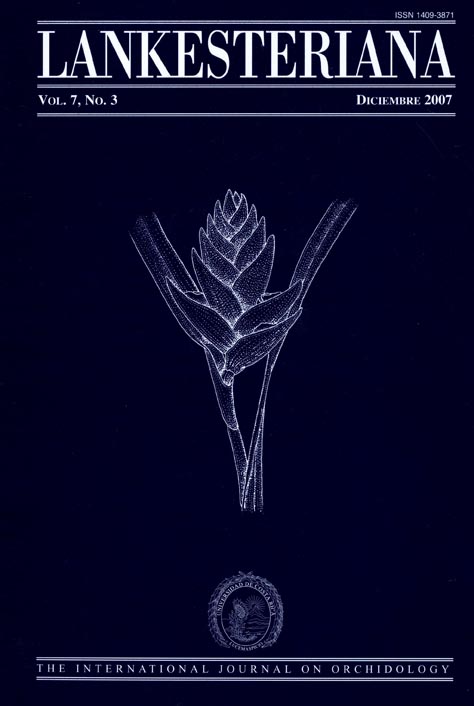Genetic relationships of Phragmipedium species (Orchidacea)using amplified fragment lenght polymorphism (AFLP) analysis
DOI:
https://doi.org/10.15517/lank.v0i0.7931Keywords:
Orchidaceae, marcadores de ADN, Phragmipedium, Phragmipedium kovachii, AFLP, huellas digitales, DNA markers, FingerprintingAbstract
The objective of this study is to evaluate the genetic relationships of eight Peruvian species of the genus Phragmipedium using amplified fragment length polymorphisms and a phenetic analysis (UPGMA). The analysis showed that the species are phenetically grouped in four large clusters. The first cluster includes species from the Himantopetalum (P. pearcei and P. richteri) and Lorifolia (P. boissierianum) sections. The second cluster comprised the species of the Micropetalum section (P. besseae and P. schlimii). The third one included P. kovachii in the Schluckebieria section. The fourth cluster contains species of the Phragmipedium (P. caudatum and P. wallisii) section. The results show that AFLP analysis is a powerful genetic tool for the analysis of the taxonomy of orchids from the diverse and complex Phragmipedium genus.Downloads
Download data is not yet available.
Downloads
Published
2007-11-01
How to Cite
Rodríguez Salas, M., Benavides Rainilla, J., & R. Espinoza, J. (2007). Genetic relationships of Phragmipedium species (Orchidacea)using amplified fragment lenght polymorphism (AFLP) analysis. Lankesteriana: International Journal on Orchidology, 7(3). https://doi.org/10.15517/lank.v0i0.7931
Issue
Section
Articles
License
According to the Open Access policy promoted by the University of Costa Rica, all the papers published by Lankesteriana are licensed under the Creative Commons copyright and can be downloaded free of charge. The journal holds copyright and publishing rights under the CC BY-NC-ND 3.0 CR license.
Before the publication of the materials submitted by the author(s) in LANKESTERIANA, the author(s) hereby assign all rights in the article to the Lankester Botanical Garden.





